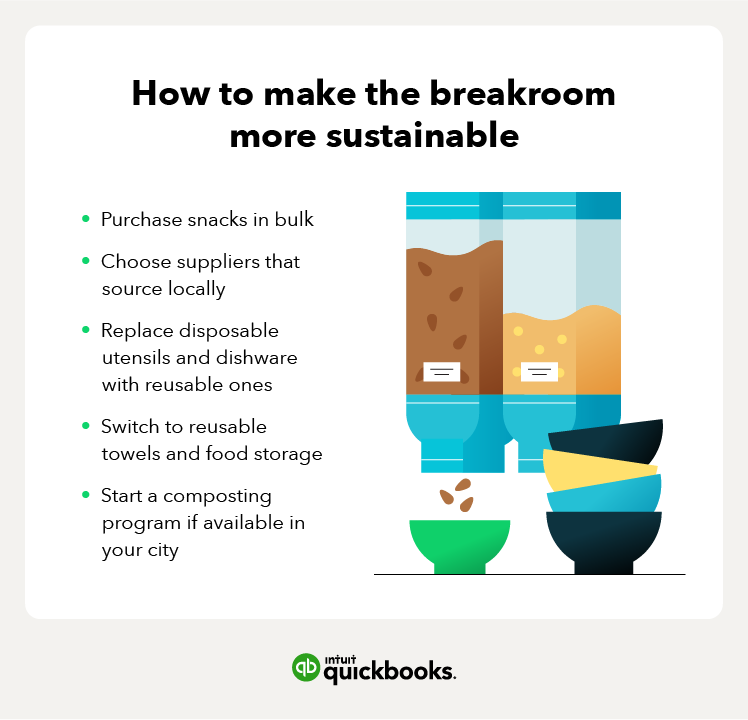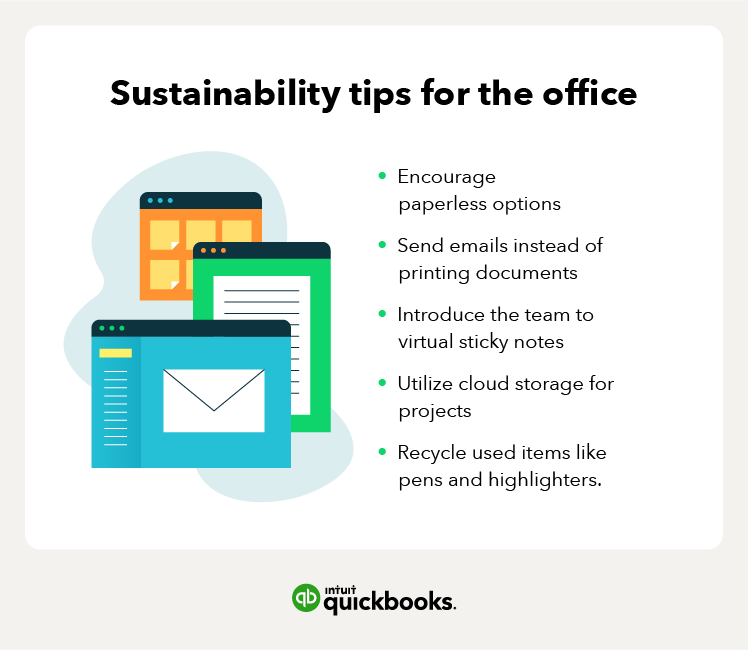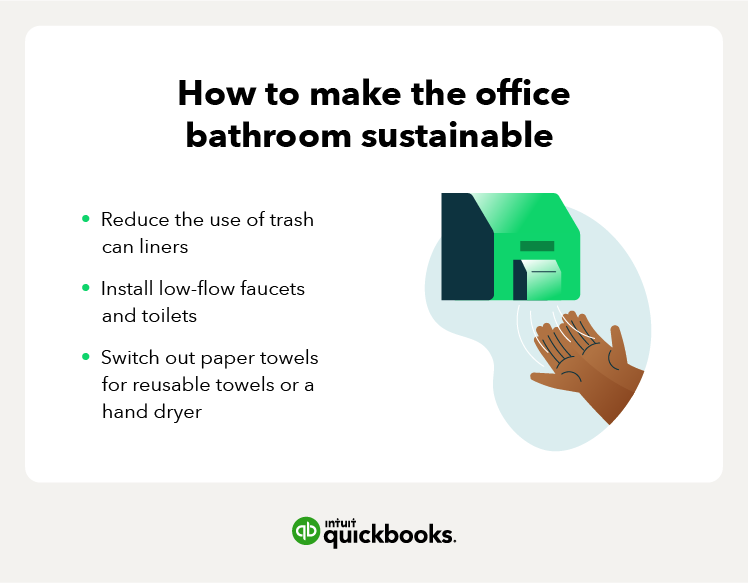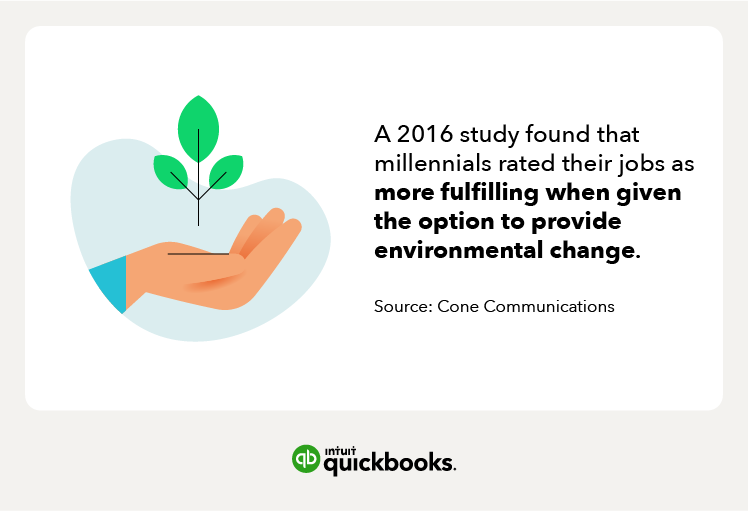Reducing waste is one of those goals with twofold benefits. To start, it’s good for the environment. Less waste means less damage to our planet. But bonus—it’s good for your business’s bank account too. Here are some ways to reduce waste in your small business, and why you should.

How to reduce waste in your small business

Opportunities to reduce waste
There are lots of tangible and intangible opportunities to operate more sustainably as a business. If you’ve already added glass recycling to your company’s after-work happy hour, kudos! Check out these other ideas to get the ball rolling.

Energy and carbon emissions
Here’s a fun fact for financially savvy business owners: Every state has its own price per kilowatt-hour (kWh). It’s currently lowest in Louisiana (7.71 cents/kWh) and highest in Hawaii (28.72 cents/kWh).
Imagine you’re located somewhere in the middle, where you pay about 14 cents/kWh. If you kept 1,000 watts of lights on for 10 extra hours per day, you’d be wasting $42.61 per month. That’s $511.35 per year.
And that’s not an uncommon situation for many small businesses—even ones with the technology to conserve energy.
“Say an occupancy sensor controls a number of lights requiring a total of 1,000 watts,” says Mike Jones, president of SEEDidaho , a sustainable design firm. “If you don’t program your occupancy sensors properly, much energy will be wasted.”
Occupancy sensors are one tool many businesses already use to try to reduce waste. They conserve energy by keeping the lights on when employees are in the office and off when no one is around. But when they’re incorrectly programmed, occupancy sensors do, well … nothing. Which means your lights stay on all night, every night.
“If there are two occupancy sensors and those 1,000 watt lights stay on for 10 hours more a day than needed, that’s a lot of extra kilowatt hours,” Jones says.
But here’s some good news. Using the example above, reconfiguring those occupancy sensors wouldn’t just save your business over $500 a year—you’d also be lowering your business’s carbon footprint . A thousand watts of energy translates to .43 tonnes of CO2 a day. Over a year, that’s a savings of 156.95 tonnes of CO2.
If you haven’t already conducted an energy audit on your office or storefront, start there. Taking inventory of your space can help you uncover all sorts of problems beyond inaccurate occupancy sensors. Updating an inefficient HVAC system and any outdated lighting can make a dramatic difference to your electric bill and energy usage.

Office supplies and materials
Conserving energy and lowering your business’s carbon footprint aren’t the only ways to save. If your business has a product, you’ve probably already taken a look at more sustainable packaging options . But even in the office, there are many other ways to reduce waste. Here are a few places to look.
1. Breakroom: Start with snacks. Individually wrapped snacks are nice, but buying in bulk means fewer plastic wrappers in the trash. Recyclable paper cups are handy for holding nuts, small candies, and granola. Fresh, uncut fruit like bananas, apples, and oranges offer all the nutrients without the plastic. Consider your snack supplier as well when looking to reduce waste. Look for local providers who source from nearby farmers and vendors to cut down on additional CO2 emissions.
Another breakroom suggestion is to replace disposable items with reusable ones whenever possible. At a beginner level, that includes plates, cups, and cutlery. More advanced savings includes reusable paper towels, napkins, and food wraps.
Finally, consider the waste we see most often in the breakroom: food waste. Every year, approximately 31% of food in the United States (133 billion pounds) is thrown out , according to the Environmental Protection Agency (EPA). That food waste goes into landfills, where its decomposition produces methane—a greenhouse gas that’s actually more harmful for the atmosphere than CO2.
Your business can reduce food waste by not over-ordering for company lunches and events. From there, food that must be thrown away can be put to better use via composting. Fruits, vegetables, meat and fish scraps, dairy products, bread, coffee grounds, coffee filters, tea bags, and other leftovers are all compostable. Your city might offer a composting program, but if not, consider partnering with a community organization or garden.
2. Front desk and offices: Did you know the average office worker uses 10,000 sheets of copy paper each year, according to the EPA? One study by Xerox found nearly half of all printed documents are thrown away within 24 hours. Worse, 30% are never picked up from the printer at all.
Whenever possible, encourage employees to go paperless in the office. Rather than printing off documents for everyone to mull over at their desks, send an email. Incentivize readership and participation with fun activities.
Other office supplies may have digital replacements as well. Introduce your team to virtual sticky notes. Bundle different project components together in a shared folder on the cloud. And if you still need to use materials like highlighters, pens, and sticky notes, give your team the opportunity to recycle them later.
3. Bathroom: Never fear—this has nothing to do with toilet paper. But there are other ways to reduce waste in the restroom. The smallest is reusing trash can liners. Typically, if your business uses paper towels for drying hands, the only thing in the trash by the door is paper towels. So, if the liner isn’t showing signs of wear, consider dumping the trash out but keeping the liner for a second or third use.
And speaking of paper towels, there’s another opportunity to reduce waste. A recycling and waste manager at Harvard University once estimated that 20% to 40% of an office’s waste (by volume) came from paper towels. And those same paper towels add up. Studies differ, but some estimate that one employee goes through about 2,400 paper towels a year. Others say it may be as many as 3,000.
Alternatives to all those wasted paper towels include reusable towels, hand dryers, and even cloth commercial towel dispensers.

Less waste, more benefits
Reducing waste in your small business has several benefits. There’s the environmental impact, of course, but also cost savings, marketing opportunities, and even employee happiness. One study found that millennials rated their jobs more fulfilling when they were given the opportunity to make a positive social and environmental impact. That same demographic was also highly likely to take a company’s social and environmental commitments into consideration when deciding where to work.
Sustainability, like anything else, isn’t always easy. But reducing waste benefits everyone, from your own small business to the planet at large.













